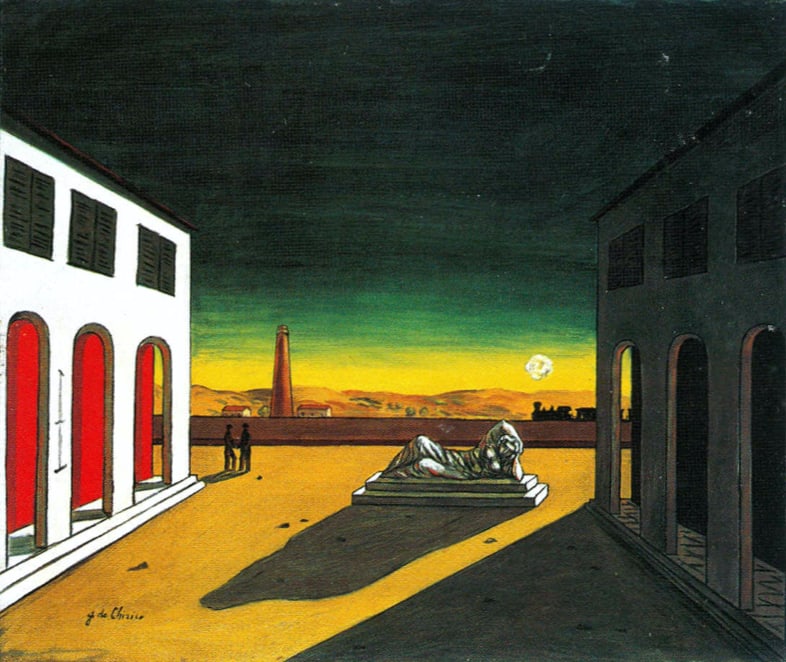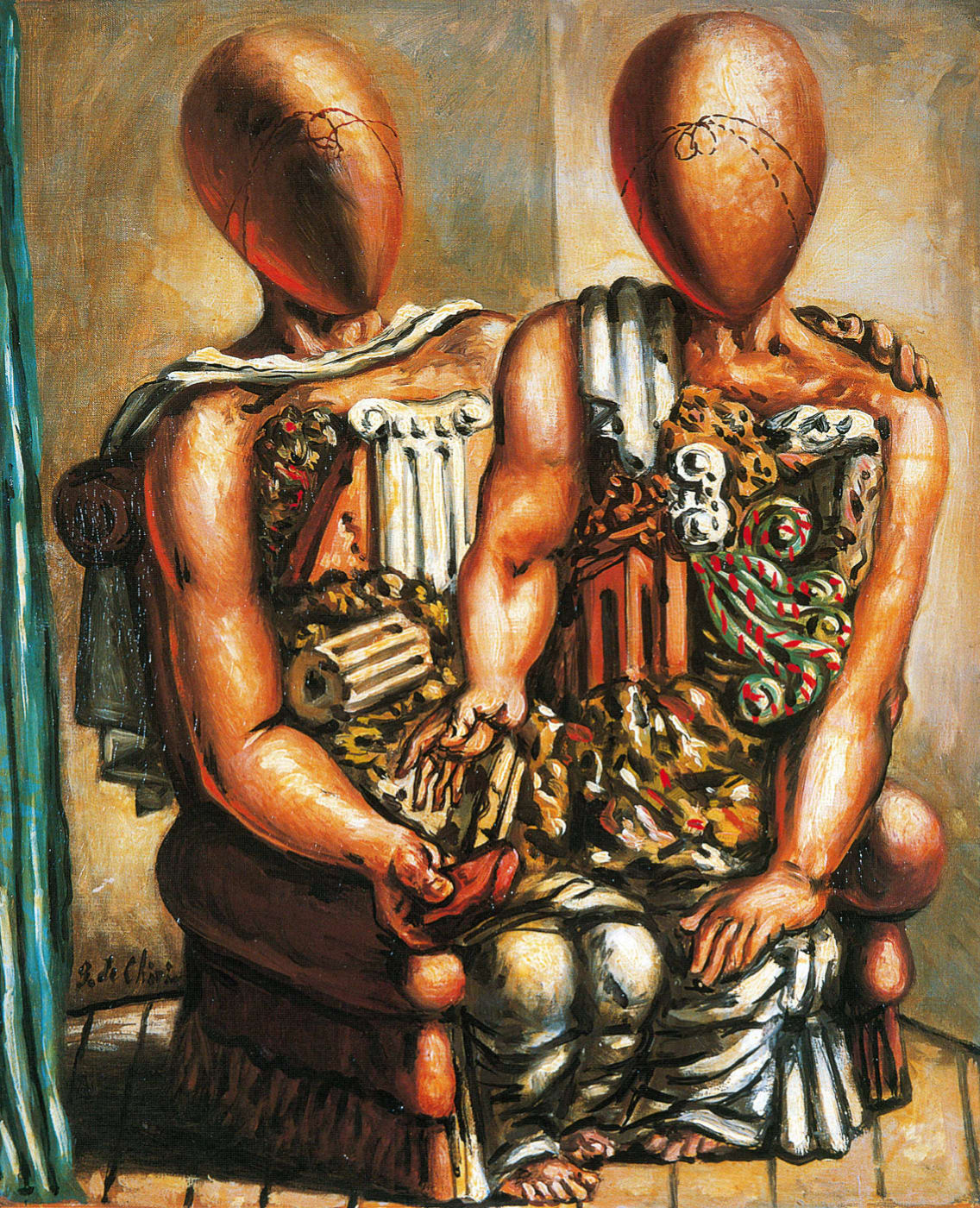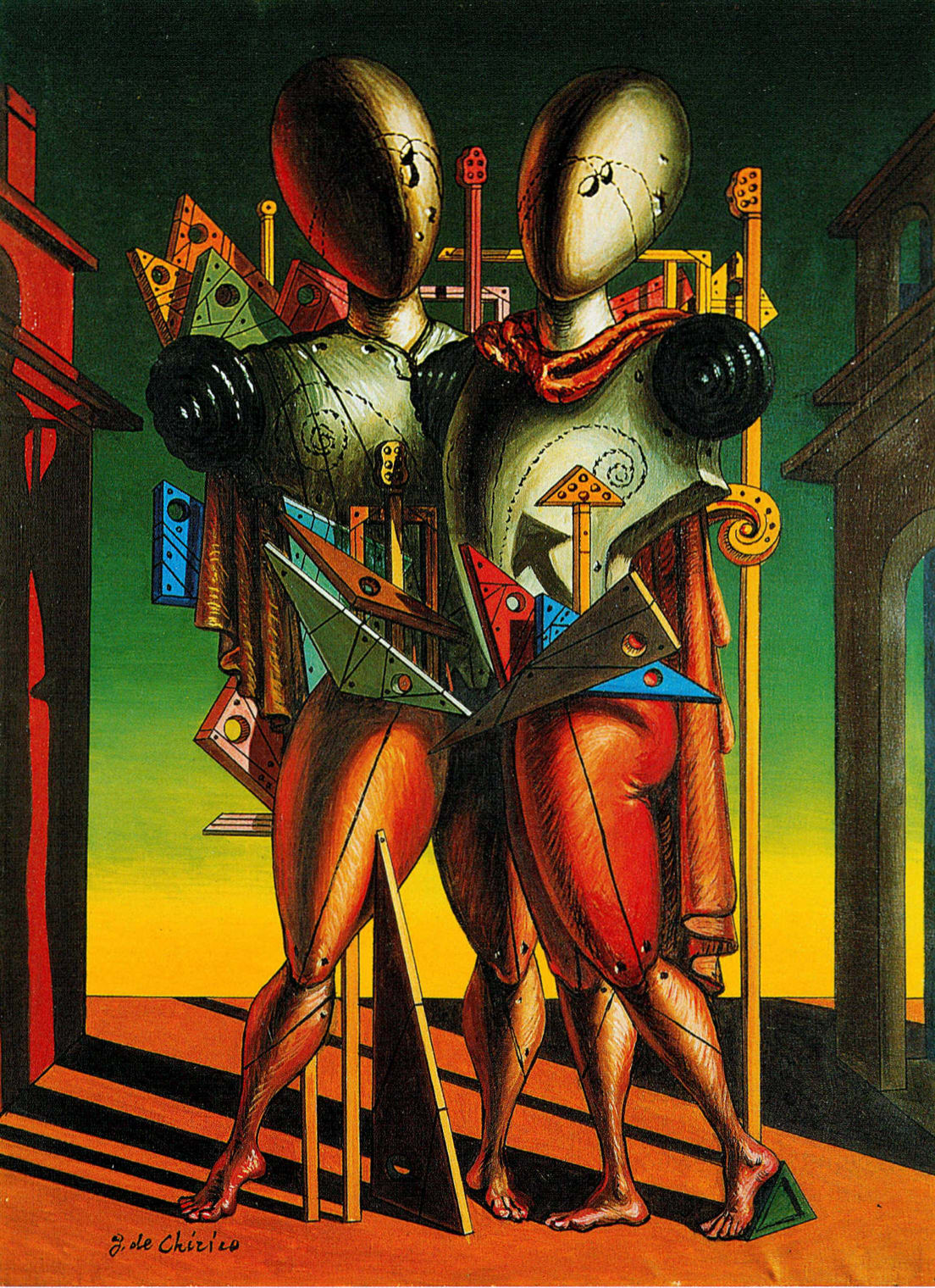OUT OF SYNC
Giorgio de Chirico comes to take his place—so important—in Surrealism through transplantation and through a discordance of times. At the moment when his work, developed in an entirely different context, is called upon to play its role in the formation of Surrealism, the metaphysical vein is already obsolete, and its author has taken other directions. After the honeymoon of the painter’s brief stay in Paris at the end of 1924, the misunderstanding continued to grow until it turned into discord. Money matters—the Surrealists were the great collectors of the metaphysical period, whose works they saved in France from the neglect of Paul Guillaume or abandonment—but also psychological incompatibility, the moral rigidity of Breton, and the slyness of the “fox,” as Giuseppe Ungaretti nicknamed him, who responded to new solicitations from dealers and critics, the bêtes noires of the Surrealists, etc. The conflict became open. Anathema and the artist’s “death” proclaimed in the columns of La Révolution Surréaliste, a war of titles, a war of forgeries. André Breton’s great anger went as far as insult during a studio visit recalled by Max Ernst, and to blows, during a confrontation recounted by Gualtieri di San Lazzaro, where one sees a hatred as violent as the earlier passion had been absolute.

Piazza d’Italia. 1952, oil on canvas, 50 × 60 cm. Private Collection, Courtesy Galleria d’Arte Maggiore, Bologna.
COUPLES
Whatever the period, mannequins were never absent from De Chirico’s work. Often shown in pairs—to explore mythological themes such as Hector and Andromache, but also to represent two spouses, the muse and her poet—as were the two Dioscuri, the nickname given to the artist and his brother Alberto Savinio. In the 1920s, these strange figures take form in the Archaeologists. In keeping with the artist’s pictorial research, the brushstroke becomes visible, the material more pronounced, and the colors softer. Yet, though they never possess faces, they become increasingly human.


The Archaeologists or Castor and Pollux. 1950s, oil on canvas, 60.2 × 50.4 cm. Private Collection, Courtesy Galleria d’Arte Maggiore, Bologna.
Hector and Andromaque. 1942, oil on canvas, 80 x 60 cm. Private Collection, Courtesy Galleria d’Arte Maggiore, Bologna.
Hector and Andromaque. 1942, oil on canvas, 80 x 60 cm. Private Collection, Courtesy Galleria d’Arte Maggiore, Bologna.

